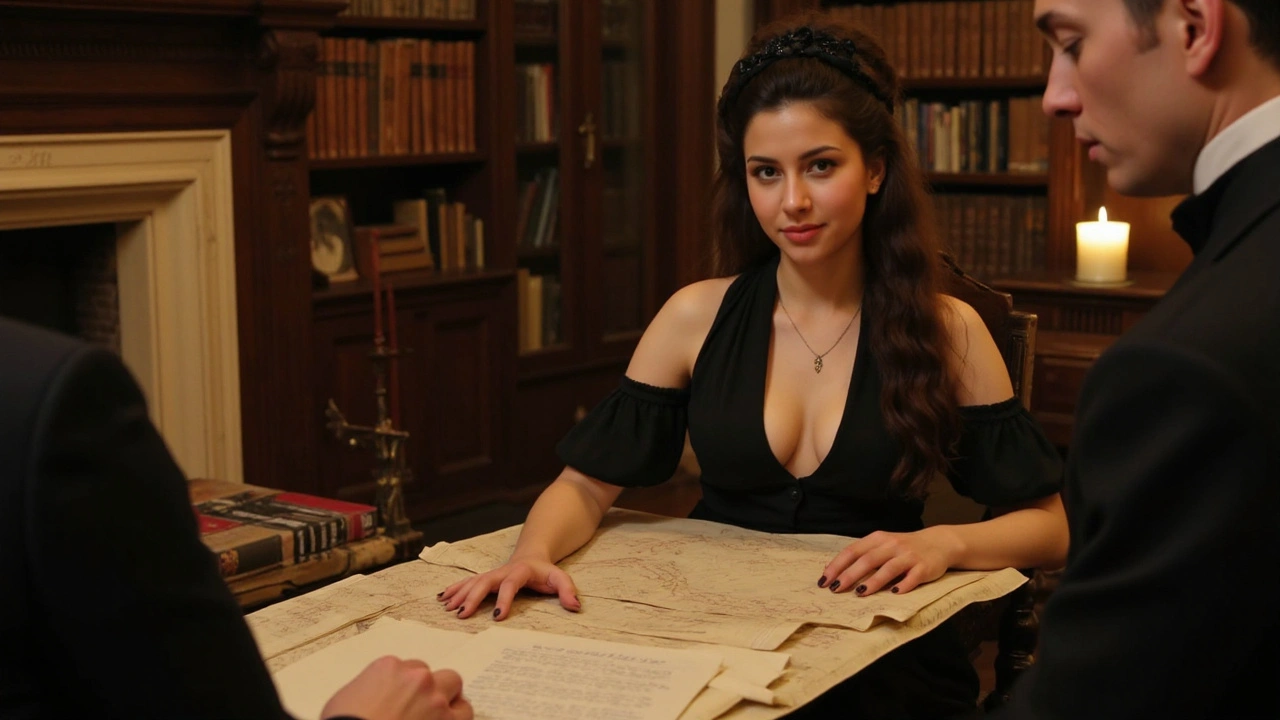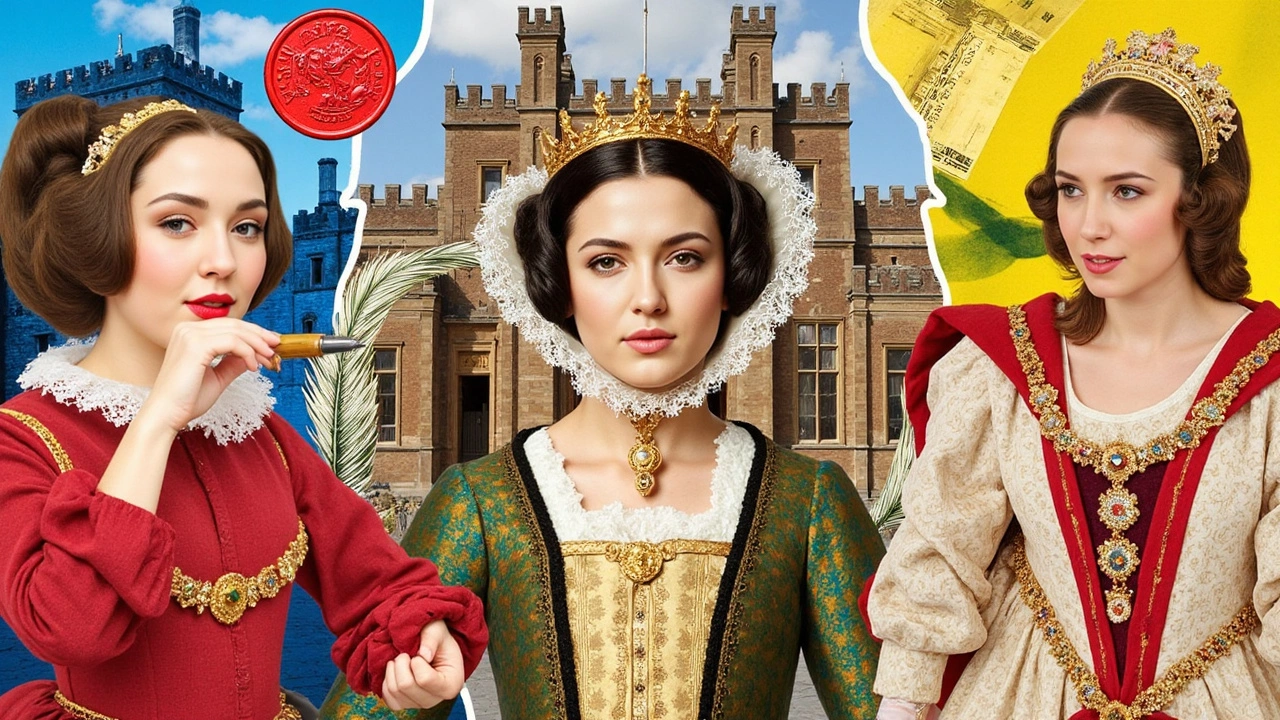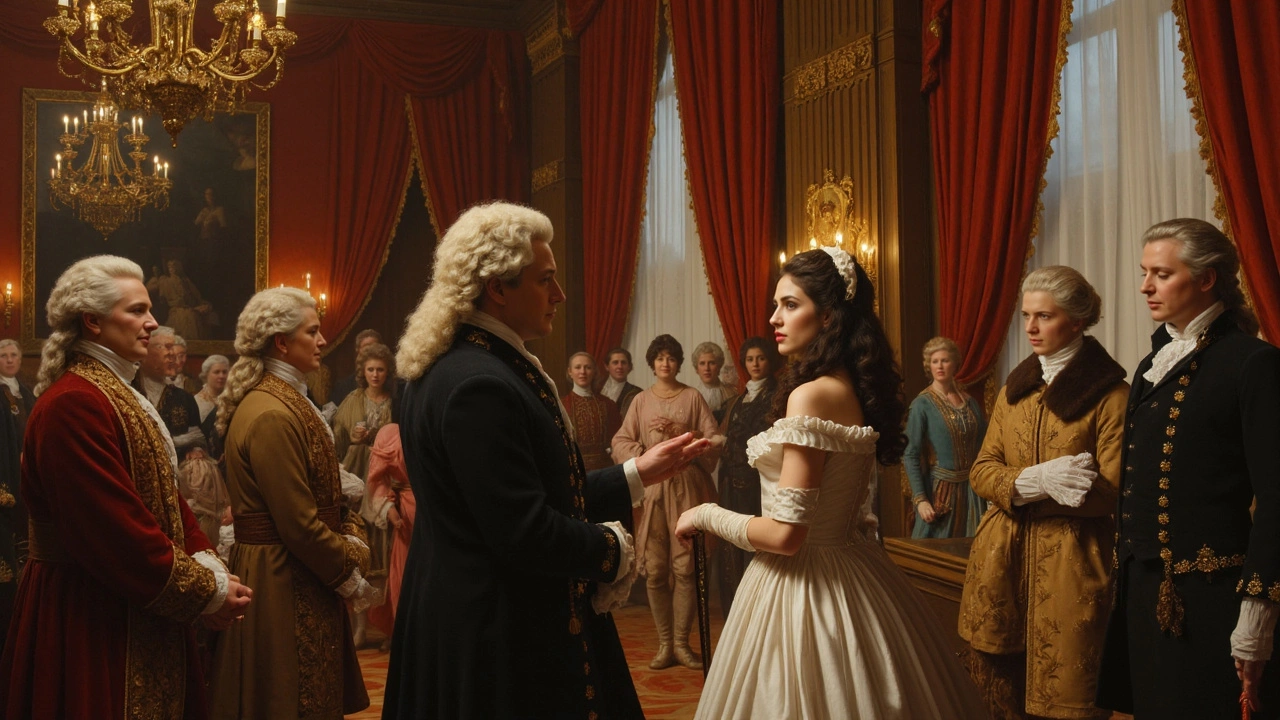Think power only sits with kings and queens? History says otherwise. For centuries, courtesans were master power players, quietly steering the course of politics, fashion, and even wars. They weren’t born into privilege or crowned in gold, but they sure knew how to change the rules in their favor.
Curious how someone outside the official royal circle could change the fate of a king or topple an entire court? The secret was their mix of smarts, charm, and bold networking. If you picture courtesans as just companions, you’re missing the bigger story—these women built their own ladder to the top, one relationship at a time.
Let’s break down how courtesans in history pulled off some of the boldest power moves ever. You’ll get the inside scoop on the tricks they used, the men they outplayed, and the legacies they left behind. Understanding their influence is like getting a cheat sheet for how power really works—even today.
- How Courtesans Gained Influence
- Notorious Power Plays in the Royal Courts
- Top Tactics: Manipulation, Charm, and Alliances
- Legacy: Lasting Impact on Power Dynamics
- Lessons for Today: Influence and Image
How Courtesans Gained Influence
Courtesans didn’t just strike it lucky—they worked their way up using whatever tools were at their disposal. In many cases, their backgrounds were far from glamorous. Most started out as entertainers, dancers, or even low-ranking servants before they caught the eye of a powerful patron. Once inside the palace walls, everything changed.
The real game-changer was access to the royal court. A well-placed courtesan could gather intel, build alliances, and sway opinions just by knowing the right people and saying the right things at the right moments. Take Nell Gwyn, for example. She started off selling oranges in London’s theaters, but after catching King Charles II’s attention, she became one of the most influential women in England. She didn’t just entertain; she gave political advice and even intervened on behalf of prisoners.
Here’s the thing: influence was never just about looks. These women learned languages, worked on their reputation, and got smart about who they spent time with. Being charming helped, but smarts mattered more. Jeanne Antoinette Poisson, better known as Madame de Pompadour, became the official mistress to King Louis XV. She used her position to promote the arts, shape court fashion, and even influence France’s foreign policy.
“Madame de Pompadour was not only the king’s mistress; she was his most trusted adviser and a true minister of the crown.” – The Smithsonian Magazine
If you’re wondering what set them apart, here are some key ways courtesans grabbed the upper hand:
- Strategic networking: They built connections with nobles, artists, and diplomats instead of sticking to one circle.
- Skills upgrade: From art and music to politics and languages, self-education was a must.
- Reputation management: Word spread fast, so keeping a good name or at least steering the gossip in their favor was critical.
- Leveraging favors: They negotiated support, money, or safety for themselves and their families by always having something others wanted.
Some even amassed fortunes and real political clout. Check out the kind of pull they had at different royal courts:
| Courtesan | Country | Era | Known For |
|---|---|---|---|
| Madame de Pompadour | France | 18th Century | Arts patron, political adviser |
| Nell Gwyn | England | 17th Century | Royal influence, public goodwill |
| Veronica Franco | Venice | 16th Century | Poet, defender of women’s rights |
| La Belle Otero | France/Spain | 19th-20th Century | Bankrolled by European royalty |
Want to know the real secret? Back in the day, most people didn’t realize just how much impact these courtesan figures had until the history books caught up with them. They weren’t just survivors—they were quiet power brokers, flipping every bit of access into lasting influence.
Notorious Power Plays in the Royal Courts
If you ever thought rulers called all the shots, history’s full of surprises. Courtesans turned more than a few royal courts upside down. One of the most famous moves? Just look at Madame de Pompadour. She wasn’t born noble, but she became the official mistress of King Louis XV of France. With her charm and brains, she wasn’t just a guest at Versailles—she helped decide who got to see the king, who rose in power, and who found themselves out in the cold. She even pushed for major art and architecture projects, showing you how far influence could stretch.
Jump over to Russia in the 1700s and you’ve got Catherine the Great. Before she wore the crown, she played the court’s game better than anyone. She turned relationships with powerful men into stepping stones to the throne. Her connections and sharp mind helped her survive brutal palace politics—and finally, seize power outright.
In India, there’s the case of Begum Samru, who started as a dancer and stately courtesan in the Mughal court. She became a legendary leader, even commanding her own army. She wasn’t just an entertainer—her political tips and alliances made her an unofficial authority figure in the region, earning both fear and respect.
Some courtesans used secrets as their main weapon. In Renaissance Italy, Tullia d’Aragona became the go-to middlewoman for secret talks in Florence. She introduced future cardinals, merchants, and nobles, often settling disputes before they could explode into public scandal. This alone made her a key figure in the city’s politics.
These women used more than beauty. They mastered politics, conversation, and deals behind the scenes. Royal courts learned the hard way that ignoring them wasn’t just risky—it could be disastrous. If you're looking for stories where someone on the sidelines changed the whole game, these power moves are as real as it gets for any courtesan in history.

Top Tactics: Manipulation, Charm, and Alliances
Courtesans weren’t just pretty faces; they were power brokers who knew exactly how to read a room and use every tool at their disposal. History is full of examples where their moves changed the game for kings, generals, and entire countries. The most successful courtesans balanced manipulation, natural charm, and smart alliances—sometimes all at once.
Take Madame de Pompadour, who didn’t just win the heart of King Louis XV of France but also managed to become his main advisor for over 20 years. She used her influence to promote artists, push her friends into powerful jobs, and sometimes even direct military decisions. Her secret was knowing what the king wanted before he said it—and making sure she held the keys to his happiness and comfort. That’s not just romance; that’s strategic thinking.
Another classic case: Mata Hari. She played both sides as a courtesan and a spy during World War I. By charming top military officials, she got access to secrets, though it eventually caught up to her. Her story’s a reminder that these tactics could be risky, but no one can deny the reach she had while it lasted.
Here’s what made their tactics work so well:
- Cultivating exclusive relationships: Courtesans often focused on a few powerful clients, building trust and using inside info.
- Staying ahead with fashion and gossip: They were often trendsetters, which made them more interesting to have around at court.
- Network building: Alliances with other influential women and political players gave courtesans safety nets and more leverage.
- Emotional intelligence: Reading moods, anticipating needs, and knowing exactly when to push or pull back was their bread and butter.
This blend of tactics kept courtesans at the center of action, far away from the sidelines. In her book, "The Book of the Courtesans," Susan Griffin sums it up well:
“The courtesan mastered the art of making herself indispensable—never only for pleasure, but always for influence.”
It’s not just stories; there are solid numbers that show their impact. For instance, Madame de Pompadour influenced over a dozen major political appointments in France during her peak years. Check out this quick look:
| Courtesan | Era | Key Tactic | Impact |
|---|---|---|---|
| Madame de Pompadour | 1700s France | Advisorship, Patronage | Guided royal policy, pushed art and culture |
| Mata Hari | WWI Europe | Espionage, Seduction | Access to military secrets, major trial |
| Veronica Franco | 1500s Venice | Network, Poetry | Defended Venetian women, shaped laws |
When you look at the big picture, the real ace up the sleeve for these courtesans was always their ability to switch up their strategy, depending on who they dealt with. That flexibility kept them not just surviving, but thriving, in some of the hardest courts in history.
Legacy: Lasting Impact on Power Dynamics
Courtesans didn’t just disappear when the parties ended or the royalties changed hands. Their real legacy sticks around in the way power moves quietly through personal relationships and clever social plays. If you ever wondered why so many royal courts were full of tension and plotting, just look at how courtesans put themselves at the center of influence, using charm and wit in ways that ripple out even today.
Take Madame de Pompadour, for example. She became a trusted advisor to Louis XV in 18th-century France. She helped shape art, literature, and even political strategy. Her influence went way beyond the bedroom—she got royal jobs for her friends, steered foreign policy, and even managed the king’s schedule. Her name still pops up in political science classes for a reason. Then there was Mata Hari, an actual double agent posing as a courtesan during World War I. She’s famous for showing how personal relationships can flip into powerful political moves or, in her case, spy games.
So what was their secret sauce? A lot of it came down to building strategic connections. Courtesans knew how to handle secrets, make introductions, and play rivals against each other. The key point: influence didn’t always come from a title—it came from knowing the right people and being able to sway them. Even now, you can see the echoes in business networking, entertainment, and politics. Folks who master networking often climb faster than those who just work hard in the background.
Let’s look at a few specific ways their legacy pops up in today’s world:
- Social networks: The original influencers, courtesans curated circles that helped them—and those around them—move up in the world.
- Information control: They knew secrets sold power. Today, that’s not much different from how some media or PR influencers pull strings behind a brand or cause.
- Career launches: Some courtesans set up protégés for success, kind of like modern mentors or talent scouts.
- Blending public and private influence: They blurred the lines, just like leaders who use public image and personal ties to gain trust or sway decisions.
Here’s a quick table showing just how deep their influence went in history:
| Courtesan | Era | Key Power Move | Lasting Impact |
|---|---|---|---|
| Madame de Pompadour | 1700s France | Royal Advisor, Art Patron | Shaped French culture and policy |
| Veronica Franco | 1500s Venice | Poet, Diplomat | Pushed women’s voices in literature |
| Mata Hari | 1900s Europe | Spy, Entertainer | Became the icon of espionage and seduction |
| Liane de Pougy | Late 1800s France | Social Connector | Linked artists and politicians |
You can see how “courtesan” isn’t just a footnote—it’s a blueprint for harnessing influence in turbulent times. By mixing public skills with private strategy, these women left a mark that still shapes how power is played today.

Lessons for Today: Influence and Image
Courtesans showed us a game plan that still works: real power isn’t always about a title or throne. Building a smart image and knowing how to connect with people can move mountains—even in our world of social media and networking apps. The tactics they used centuries ago still play out, just with new tools and platforms.
Take the French courtesan Madame de Pompadour. She wasn’t just King Louis XV’s favorite; she basically ran the French court behind his back. Through her network and her control over information, she set trends, got political allies, and even influenced national policy. Today, it’s not much different—people use their image and follower base to shape opinions or start trends, whether they’re selling products or pushing causes.
Here’s how these lessons show up now:
- Image Management: Like legendary courtesans, modern influencers carefully curate what the world sees. Building a relatable persona, delivering a message, and sticking to a unique style makes all the difference. Research shows that 71% of people are more likely to buy from people they follow on social media. That’s image power in action.
- Strategic Relationships: Courtesans picked allies who helped grow their influence. Today, savvy folks network at events, online, and even in casual settings. Teaming up with the right people can open doors that talent alone might keep closed.
- Information is Gold: Courtesans often knew secrets that others didn’t. Now, having access to unique info—or just knowing when to share or hold back—makes you valuable at work or socially.
- Adapting to Change: Courtesans rolled with the punches and updated their approaches as power shifted. Staying flexible in today’s fast-moving world is just as necessary if you want to stay relevant.
Now, check out this table that matches classic courtesan moves with today’s power tactics:
| Courtesan Era | Modern Equivalent |
|---|---|
| Hosting influential salons for politicians | Building communities on Instagram or TikTok |
| Sending handwritten notes to sway opinions | Crafting viral Twitter threads to spark buzz |
| Using gossip as leverage | Controlling narratives with PR and smart posts |
| Building alliances in the royal court | Networking on LinkedIn and at industry events |
If there’s one lesson to steal from courtesan history, it’s that your influence grows when you build the right image and know how to work a room—whether that room’s a palace or just your phone screen. The courtesan playbook is alive and well, just adapted for our times.


